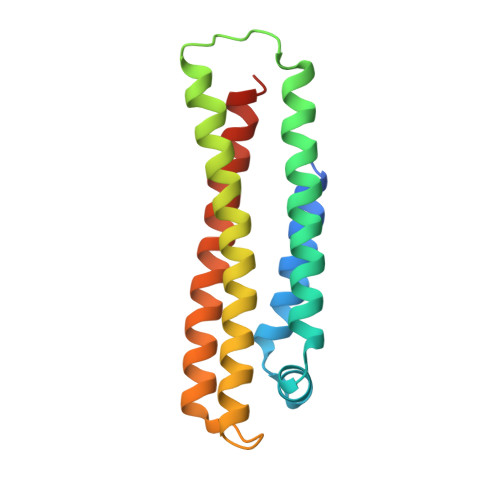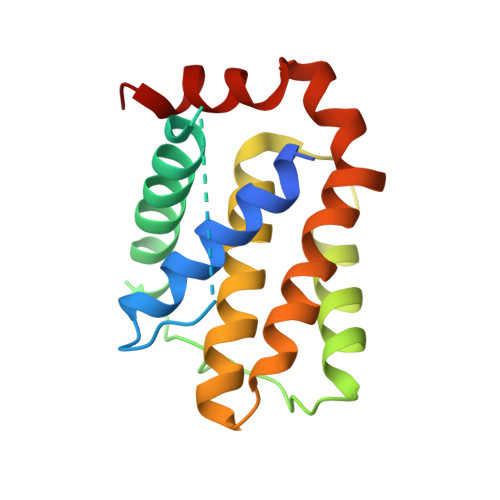A computationally designed chimeric antigen receptor provides a small-molecule safety switch for T-cell therapy.
Giordano-Attianese, G., Gainza, P., Gray-Gaillard, E., Cribioli, E., Shui, S., Kim, S., Kwak, M.J., Vollers, S., Corria Osorio, A.J., Reichenbach, P., Bonet, J., Oh, B.H., Irving, M., Coukos, G., Correia, B.E.(2020) Nat Biotechnol 38: 426-432
- PubMed: 32015549
- DOI: https://doi.org/10.1038/s41587-019-0403-9
- Primary Citation of Related Structures:
6IWB - PubMed Abstract:
Approaches to increase the activity of chimeric antigen receptor (CAR)-T cells against solid tumors may also increase the risk of toxicity and other side effects. To improve the safety of CAR-T-cell therapy, we computationally designed a chemically disruptable heterodimer (CDH) based on the binding of two human proteins. The CDH self-assembles, can be disrupted by a small-molecule drug and has a high-affinity protein interface with minimal amino acid deviation from wild-type human proteins. We incorporated the CDH into a synthetic heterodimeric CAR, called STOP-CAR, that has an antigen-recognition chain and a CD3ζ- and CD28-containing endodomain signaling chain. We tested STOP-CAR-T cells specific for two antigens in vitro and in vivo and found similar antitumor activity compared to second-generation (2G) CAR-T cells. Timed administration of the small-molecule drug dynamically inactivated the activity of STOP-CAR-T cells. Our work highlights the potential for structure-based design to add controllable elements to synthetic cellular therapies.
- Ludwig Institute for Cancer Research, University of Lausanne (UNIL), Epalinges, Switzerland.
Organizational Affiliation:


















